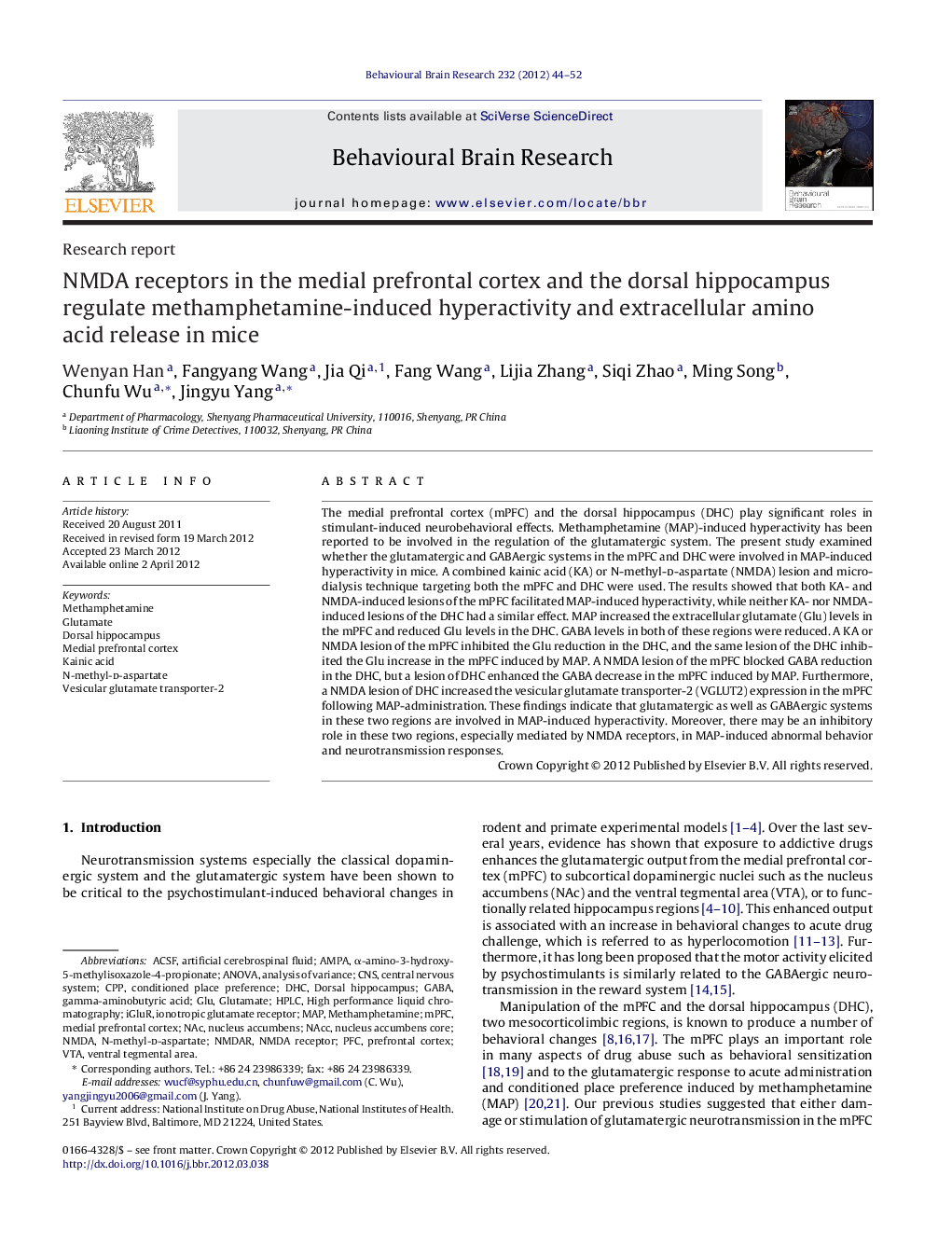| کد مقاله | کد نشریه | سال انتشار | مقاله انگلیسی | نسخه تمام متن |
|---|---|---|---|---|
| 4313095 | 1289985 | 2012 | 9 صفحه PDF | دانلود رایگان |

The medial prefrontal cortex (mPFC) and the dorsal hippocampus (DHC) play significant roles in stimulant-induced neurobehavioral effects. Methamphetamine (MAP)-induced hyperactivity has been reported to be involved in the regulation of the glutamatergic system. The present study examined whether the glutamatergic and GABAergic systems in the mPFC and DHC were involved in MAP-induced hyperactivity in mice. A combined kainic acid (KA) or N-methyl-d-aspartate (NMDA) lesion and microdialysis technique targeting both the mPFC and DHC were used. The results showed that both KA- and NMDA-induced lesions of the mPFC facilitated MAP-induced hyperactivity, while neither KA- nor NMDA-induced lesions of the DHC had a similar effect. MAP increased the extracellular glutamate (Glu) levels in the mPFC and reduced Glu levels in the DHC. GABA levels in both of these regions were reduced. A KA or NMDA lesion of the mPFC inhibited the Glu reduction in the DHC, and the same lesion of the DHC inhibited the Glu increase in the mPFC induced by MAP. A NMDA lesion of the mPFC blocked GABA reduction in the DHC, but a lesion of DHC enhanced the GABA decrease in the mPFC induced by MAP. Furthermore, a NMDA lesion of DHC increased the vesicular glutamate transporter-2 (VGLUT2) expression in the mPFC following MAP-administration. These findings indicate that glutamatergic as well as GABAergic systems in these two regions are involved in MAP-induced hyperactivity. Moreover, there may be an inhibitory role in these two regions, especially mediated by NMDA receptors, in MAP-induced abnormal behavior and neurotransmission responses.
► Both KA and NMDA infusions of mPFC enhanced MAP-induced hyperactivity.
► The mPFC lesion inhibited Glu reduction in DHC and the DHC lesion inhibited Glu increase in mPFC induced by MAP.
► A NMDA lesion of mPFC or DHC inhibited GABA reduction induced by MAP in the DHC or mPFC.
► A NMDA lesion of DHC increased VGLUT2 expression in the mPFC following MAP-administration, but not vice versa.
Journal: Behavioural Brain Research - Volume 232, Issue 1, 15 June 2012, Pages 44–52